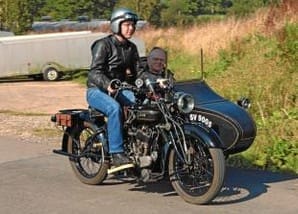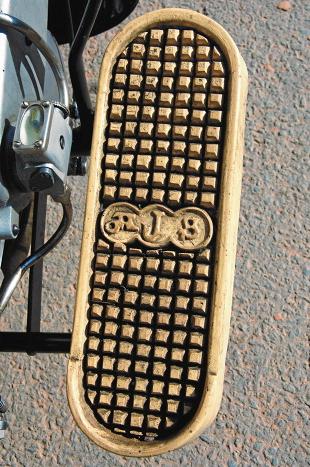
Robin James is a man of exacting standards – so to be offered the opportunity to inspect and sample his own steed, which regularly transports Robin and Yve (Mrs James) to and on events home and abroad, is an opportunity not to be passed up. And what you may ask does a man who makes his living from restoring old motorcycles restore for himself? Well, here’s the answer, it’s a 1927 H1 AJS, with period matching AJS sidecar.
The vintage V-twin motorcycle combination was a refined and speedy way of travel, which by the later part of the 1920s was able to cover distances at a far greater lick than say an Austin 7 car. The addition of the sidecar meant it provided family transport and although it of course meant that sporting pretension was for the most part removed, it did enable one to take the family along too. Many of the vintage period makers listed a V-twin, from AJS to Zenith, with everything in between – in terms of price and style – alternating from sidevalves like the BSA, Royal Enfield or indeed the AJS featured here through to altogether more expensive and exclusive machinery – think Coventry Eagle, McEvoy and of course Brough Superior.
Enjoy more Classic MotorCycle reading in the monthly magazine.
Click here to subscribe & save.
So when Robin invited us to come and have a look at and a go on his Ajay, we headed down for a look-see. Beautifully finished in black and gold, it’s an imposing and statesmanlike chariot, which Robin bought in 2000. When he acquired it, the AJS had been restored – but some time ago. Clearly it hadn’t been used for some years and reflects Robin; “There were loads of bodges. It was severely down on power and was a pig to start. The brakes weren’t good, the clutch slipped and the steering head bearings were worn out. It probably hadn’t been used because if a bike is easy to ride, it gets ridden. This one wasn’t so it had been left.”
 Robin set about a rolling restoration, reluctant to completely dismantle the AJS and go right through it. He went about a process of finding something wrong, then fixing that and moving on to the next thing. First problem to address, though, was that under-performing engine. Bearings were worn out but Robin had a problem – AJS used roller bearings running direct on the crank mainshafts and used their own design/make of bearings rather than proprietary ones, making them hard to replace. So he modified the cases and shafts to accept proprietary bearings – there was just enough ‘meat’ in the cases to do it. Big ends were worn out, as were the pistons. However, the 74mm bore is an odd size while the pistons are an unusual shape too – basically, nothing else is similar. Robin countered the problem by having some pistons made but he also took the opportunity to increase the bore by 3mm as well as raise the compression ratio, reasoning that any extra performance gains would be welcome (the AJS is heavy metal – around 700lbs, Robin reckons). “The best way to increase an engine’s power output is increase the compression ratio,” Robin explains, “Though this is higher than standard, it’s probably still only about 5.5:1. This engine is also difficult to seal which is also a pain with trying to increase its performance. The cylinders are held down by a stud front and rear and a rear ‘strongback’ clamp, about five inches long. The valves are also in a detachable cylinder head and the engine is a bit of a strange design – it’s almost like an upside down ohv design. As I said, achieving good cylinder sealing is a real pain. In fact, AJS later modified the design to make it more conventional.”
Robin set about a rolling restoration, reluctant to completely dismantle the AJS and go right through it. He went about a process of finding something wrong, then fixing that and moving on to the next thing. First problem to address, though, was that under-performing engine. Bearings were worn out but Robin had a problem – AJS used roller bearings running direct on the crank mainshafts and used their own design/make of bearings rather than proprietary ones, making them hard to replace. So he modified the cases and shafts to accept proprietary bearings – there was just enough ‘meat’ in the cases to do it. Big ends were worn out, as were the pistons. However, the 74mm bore is an odd size while the pistons are an unusual shape too – basically, nothing else is similar. Robin countered the problem by having some pistons made but he also took the opportunity to increase the bore by 3mm as well as raise the compression ratio, reasoning that any extra performance gains would be welcome (the AJS is heavy metal – around 700lbs, Robin reckons). “The best way to increase an engine’s power output is increase the compression ratio,” Robin explains, “Though this is higher than standard, it’s probably still only about 5.5:1. This engine is also difficult to seal which is also a pain with trying to increase its performance. The cylinders are held down by a stud front and rear and a rear ‘strongback’ clamp, about five inches long. The valves are also in a detachable cylinder head and the engine is a bit of a strange design – it’s almost like an upside down ohv design. As I said, achieving good cylinder sealing is a real pain. In fact, AJS later modified the design to make it more conventional.”
Two sets of pistons
Having reassembled the motor, Robin put it back into the frame and set about seeing what would happen. Not much good, it quickly transpired. “The problem with a V-twin,” says Robin, “is that the rear cylinder gets too much oil while the front one is starved. With the AJS, this was particularly problematic – I went through two sets of pistons. I’d run it in carefully for 4/500 miles but it still seized. It was down to oiling, so I brazed in a boss on the front cylinder, tapped and drilled it and added an extra oil feed. It has a Pilgrim pump for man oiling, plus an additional ‘squirt and hope’ – it now has a Best and Lloyd drip feed to the front cylinder, which means that it is directly, independently oiled.” That was a problem solved.
 Robin encountered further tests trying to seal the various fuel taps – the AJS boasts four (two priming cocks, main petrol feed and an oil tap). “They’re a strange shape” he explains. “I’m sure they were very good when new but trying to achieve a good seal proved a right pain, especially as the replacement corks were slightly wedge shaped. In the end, I machined them flat and that cured that.”
Robin encountered further tests trying to seal the various fuel taps – the AJS boasts four (two priming cocks, main petrol feed and an oil tap). “They’re a strange shape” he explains. “I’m sure they were very good when new but trying to achieve a good seal proved a right pain, especially as the replacement corks were slightly wedge shaped. In the end, I machined them flat and that cured that.”
Now, as with so many 1920s motorcycles, not everything is where one would expect it to be – and at the time of my ride, it was even more the case. As Robin explains; “The inverted lever on the right handlebar is the exhaust valve lifter, while the right foot pedal is the front brake. On the other side, it should be left hand the clutch, left foot the brake, but I’ve swapped them round…”
Robin explains the swap. “I had so much trouble with the clutch. It’s a single plate, about 3⁄8in thick, which has hundreds of little corks pressed into it. It’s only just capable of transmitting the load – it’s marginal at best. And as I’d increased the engine, performance, it just wouldn’t operate properly.
Clutch spring
“An early modification was to bond friction rings onto it, but it still slipped so had to beef up the clutch spring. The spring itself is very odd – it’s a cross between a clock spring and a conventional spring, made of flat steel, but worked in compression not torsion. It is almost as odd as a Velo clutch! There’s just the one central spring while the lifting mechanism is bizarre too. The only way I could get it to drive was to do the spring up as hard as possible but then I couldn’t operate it by hand, so I switched it to be foot operated, as it’s much easier to generate the necessary force. It was fine most of the time, just in moments of stress one is conditioned after years of riding to where things should be and if the rear brake was needed in a hurry, the natural instinct is to jump on the pedal which is now the clutch. So it meant instead of slowly down, drive was disengaged and it speeded up … Though I’d done all this, I still wasn’t happy with it and so took the clutch apart again. I was looking at the plate and realised that quite simply, it wasn’t absolutely flat. I put it in the lathe and now it’s completely flat and it works again. The path of true love is never smooth.”
 The sidecar body was covered in the correct fabric when Robin acquired the combo, but the coach lining had been applied by tape, rather than the correct paint and it was starting to peel off so Robin cast around for someone to do it, finally finding a chap in Cheltenham who did the necessary. That wasn’t the end of the problems with the sidecar.
The sidecar body was covered in the correct fabric when Robin acquired the combo, but the coach lining had been applied by tape, rather than the correct paint and it was starting to peel off so Robin cast around for someone to do it, finally finding a chap in Cheltenham who did the necessary. That wasn’t the end of the problems with the sidecar.
Another problem encountered was with the sidecar’s windscreen. Not the most usable of devices anyway – one needs to be released from inside the sidecar, rather than release one’s self – it hinges forward. Originally, it was a glass shield held in by channel section brass frame but this was weighty and, says Robin, on the point of failure when he bought the outfit. Robin went over the frame and re-silver soldered it all back together while at the same time adding stiffness before also replacing the glass with lighter Perspex.
The frame and sidecar chassis of the AJS has all been repainted too, new steering head bearings were made from EN36 high carbon steel bar, while the front forks – as well as being repainted – were re-bushed and spindled. The front brake received a lot of attention and it will now lock the front wheel, after Robin made a new brake plate to replace the original that was weakened by corrosion. The hub was also metal sprayed to increase wall thickness and stiffness. The front mudguard was another part made up by Robin, starting with a bare blade. As a pattern he was able to borrow a genuine one from a chap who contacted him who owned an identical AJS but needed a chain guard – Robin made two of those, gave the chap one and was able to borrow his mudguard to make a copy for himself.
So, talking over it was my turn to have a go at the controls of the AJS. Robin had taken me to a local airfield, sensibly reasoning that the perimeter road would provide a safe environment for me to try and become accustomed to the AJS and in particular its then-fitted foot clutch. Well, try as I might I kept struggling, instinctively wanting to keep grabbing the left bar lever when I went to change gear – of course, that just applied the back brake…Robin, in the chair, was watching on largely impassively as I struggled, just saying ‘hand!’ every time I went for the ‘clutch lever’ and eventually I achieved some semblance of cohesion and enjoyed several laps of the circuit. Robin reckons it’s more akin to driving a vintage car – what with hand gear change, lever throttle, foot operated brakes etc – and I’d agree with that. Soon, Nigel wanted a go too and he took to the outfit much more quickly than I did! When it came to time to go though we both elected to let Robin back at the controls to tackle the traffic around Robin’s Leominster base – a bit more practice I think before I’d be confident with the foot clutch. In the meantime, I’m sure it’ll be pressed into good service home and abroad as Robin and Yve wrack up the miles. ![]()
Robin James Engineering Services are on +44 (0) 1568 612800
Advert
 Enjoy more The Classic MotorCycle reading in the monthly magazine. Click here to subscribe.
Enjoy more The Classic MotorCycle reading in the monthly magazine. Click here to subscribe.




